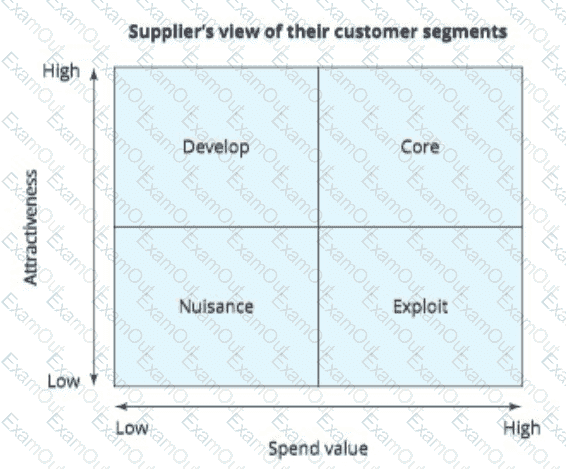Which of the following are most likely to be indirect costs of a garment manufacturer? Select THREE that apply.
Procurement gets involved in negotiating purchase requisitions only when there is a value analysis to ensure that only value-adding aspects are included. Is this statement true?
A senior buyer analyses the supply market and he realises that his organisation is treated as Exploit according to supplier's perspective model. What does he need to do?
An integrative negotiation style involves ...
Effective listening is important in integrative negotiations. Is this statement correct?
The bargaining power of buyers is likely to be high in relation to suppliers in which of the following situations?
A buyer has lost trust in a supplier but wishes to repair the relationship. What is the appropriate first step?
Which of the following is a disadvantage of absorption costing method?
Which of the following are sources of power in organisational relationships?
Coercive power
Intruded power
Referent power
Tactical power
Sally is negotiating with an oversea supplier on the price and payment period. Her company and the supplying organisation are equal in bargaining power. The supplier says that they are investing in new facilities and machinery so the payment period should not be longer than 30 days. Sally knows that her company often pays the suppliers after 45 days from the delivery, but at the moment the company has positive cash flow and it is able to pay immediately. Which of the following should be Sally's concession plan?

 Chart, table Description automatically generated
Chart, table Description automatically generated